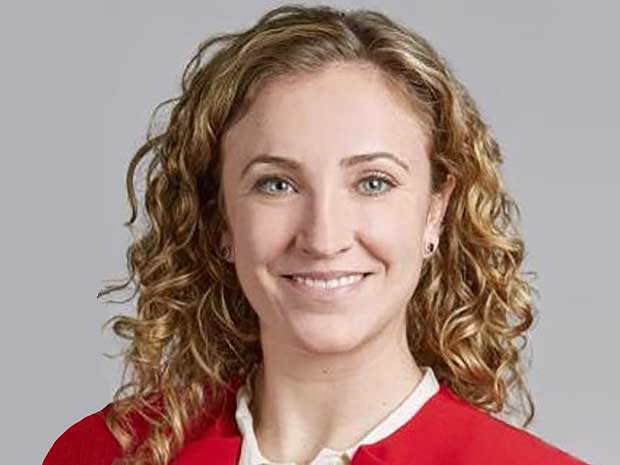Background
The Inflation Reduction of Act of 2022 (IRA) allows eligible taxpayers to transfer eligible credits for tax years beginning after Dec. 31, 2022. Under section 6418, eligible taxpayers can elect to transfer all or a portion of eligible credits to unrelated taxpayers. The transfer, which must be paid with cash, is not included in the eligible taxpayer’s gross income and not deductible by the unrelated taxpayer.
The eligible taxpayer must elect to transfer the eligible credit no later than the due date of the tax return for the tax year for which the credit is determined. The transfer must be a one-time transfer and the election once made, is irrevocable.
Section 6418 allows for the transfer of the following credits:
- Section 30C alternative fuel vehicle refueling property credit
- Section 45 production tax credit (PTC)
- Section 45Q carbon capture use and sequestration credit
- Section 45U zero-emission nuclear power production credit
- Section 45V clean hydrogen production credit
- Section 45X advanced manufacturing production credit
- Section 45Y clean electricity production credit
- Section 45Z clean fuel production credit
- Section 48C qualifying advanced energy project credit
- Section 48 energy credit
- Section 48E clean electricity investment credit
See RSM US’s prior alert on the proposed 6418 regulations IRS and Treasury release guidance on the monetizing energy credits.
Requirement to be “paid in cash”
Section 6418(b)(1) requires that any amount paid by a transferee taxpayer to an eligible taxpayer as consideration for a transfer to be paid in cash. The IRS received comments requesting that the “paid in cash” requirement be relaxed to accommodate advanced payments for credits to be transferred in the future. This is particularly applicable to production tax credits. While the IRS and Treasury declined to adopt these comments, they noted that there is no prohibition on either a transferee taxpayer or another third-party loaning funds to an eligible taxpayer. This includes loans secured by an eligible credit purchase and sale agreement, provided such loans are at arm’s length and treated as a loan for federal tax purposes.
Specified credit portion
Section 6418(a) provides that an eligible taxpayer can elect to transfer all (or any portion specified in the election) of an eligible credit. While comments recommended that the final regulations allow for horizontal credit transfers to increase flexibility and marketability of eligible credits, the final regulations confirm that taxpayers may transfer a portion of an eligible credit, but the portion must reflect a proportionate share of each bonus credit amount.
Passive activity rules under section 469
The proposed regulations provided that a specified credit portion transferred is subject to the rules in section 469 (passive credit rules). Many comments were received regarding the application of section 469 to transferred specified credit portions. The final regulations continue to require the application of the passive credit rules to transferred specified credit portions limiting the ability of individuals and S corporations to purchase tax credits. Treasury and the IRS indicated that not applying the section 469 rules could increase the risk of fraud and abuse. However, the final regulations specify that a transferee taxpayer who directly owns an interest in an eligible taxpayer’s trade or business at the time the work was completed (as required for the material participation rules) does not fail the requirements of section 469(h).
Grantor trust
The final regulations added rules for transfer elections if eligible property is held directly by a grantor trust.
Under §1.6418-2(a)(3)(v) if a grantor, or any other person that is treated as the owner of any portion of a trust as described in section 671, is an eligible taxpayer they may make a transfer election for any portion of an eligible credit determined with respect to eligible credit property held by the trust.
Process for making a transfer election
The final regulations confirm that the registration number received during the required pre-filing registration must be included on a properly completed relevant credit source form. Additionally, transfer elections must be made for the first time on an original return. A transfer election cannot be made for the first time on an amended return, withdrawn on an amended return or administrative adjustment request under section 6227 (AAR). An eligible taxpayer may file an amended return, or an AAR, to adjust the amount of the eligible credit following a timely and properly filed transfer election. This is intended to address situations where a taxpayer made a reporting error, such as miscalculating the amount of the eligible credit. If the amended return results in an increased credit, that specific increase cannot be transferred. Additionally, if the amended return results in a decreased credit, the decrease first reduces the amount of the eligible credit that is retained and then reduces the amount reported by the transferee taxpayer.
Excess credit transfer or recapture events
The final regulations adopt the definition of excess credit transfer without change while providing clarifying language for calculating the amount of excessive credit transferred to a specific transferee taxpayer if there is more than one transferee taxpayer under section 1.6418-5(b)(3).
The final regulations confirm that a transferee is liable for any recaptured tax credits. The final regulations do clarify that, except in the case of a partner or S corporation shareholder that has disposed of an interest, recapture liability applies proportionately to any transferee taxpayer and eligible taxpayer to the extent the eligible taxpayer has retained eligible credits determined with respect to the relevant eligible credit property. The final regulations added a formula to assist with this calculation. For partnerships and S corporations the final regulations provide two examples to illustrate who is responsible for recapture in the case of a sale of a portion of an interest in a transferor partnership and a subsequent sale of the investment credit property by the transferor partnership. The final regulations add section 49(b) to the list of recapture events that are not an excessive credit transfer.
Section 45Q and 45X
The final regulations clarify that ownership of the facility is not required to qualify for section 45X. In contrast, only the person that both owns the equipment and physically or contractually ensures the capture and disposal, injection, or utilization of the qualifies carbon oxide is entitled to the section 45Q credit.
REIT considerations
The final regulations provide helpful guidance requested by several commentators related to the transfer of tax credits by real estate investment trusts (REITs). The regulations clarify that eligible credits that have not yet been transferred are disregarded for purposes of the “REIT Asset Test” under section 856(c)(4). The regulations further clarify that cash received is not included in a REIT transferor’s gross income. Additionally, the final regulations provide that the transfer is not a sale of property for purposes of section 857(b)(6)(C)(iii) and section 857(b)(6)(D)(iv) and therefore, does not count as one of the seven sales described in those provisions.
Washington National Tax takeaways
While the guidance did not adopt commenter’s requests on a few key items, including the potential purchase of tax credits by individuals and the ability to horizontally slice credits, having final regulations does facilitate the continued development of an otherwise robust credit market. The final regulations also left open a discussion with respect to 45Q and 45Z. Specifically commenters requested that separate, unrelated taxpayers to which section 45Q credits and section 45Z credits are determined with respect to the same qualified facility should be permitted to make separate transfer elections. While Treasury and the IRS declined to comment on this issue for purposes of the section 6418 final regulations, they indicated this comment would be considered when drafting additional guidance under sections 45Q and 45Z.




